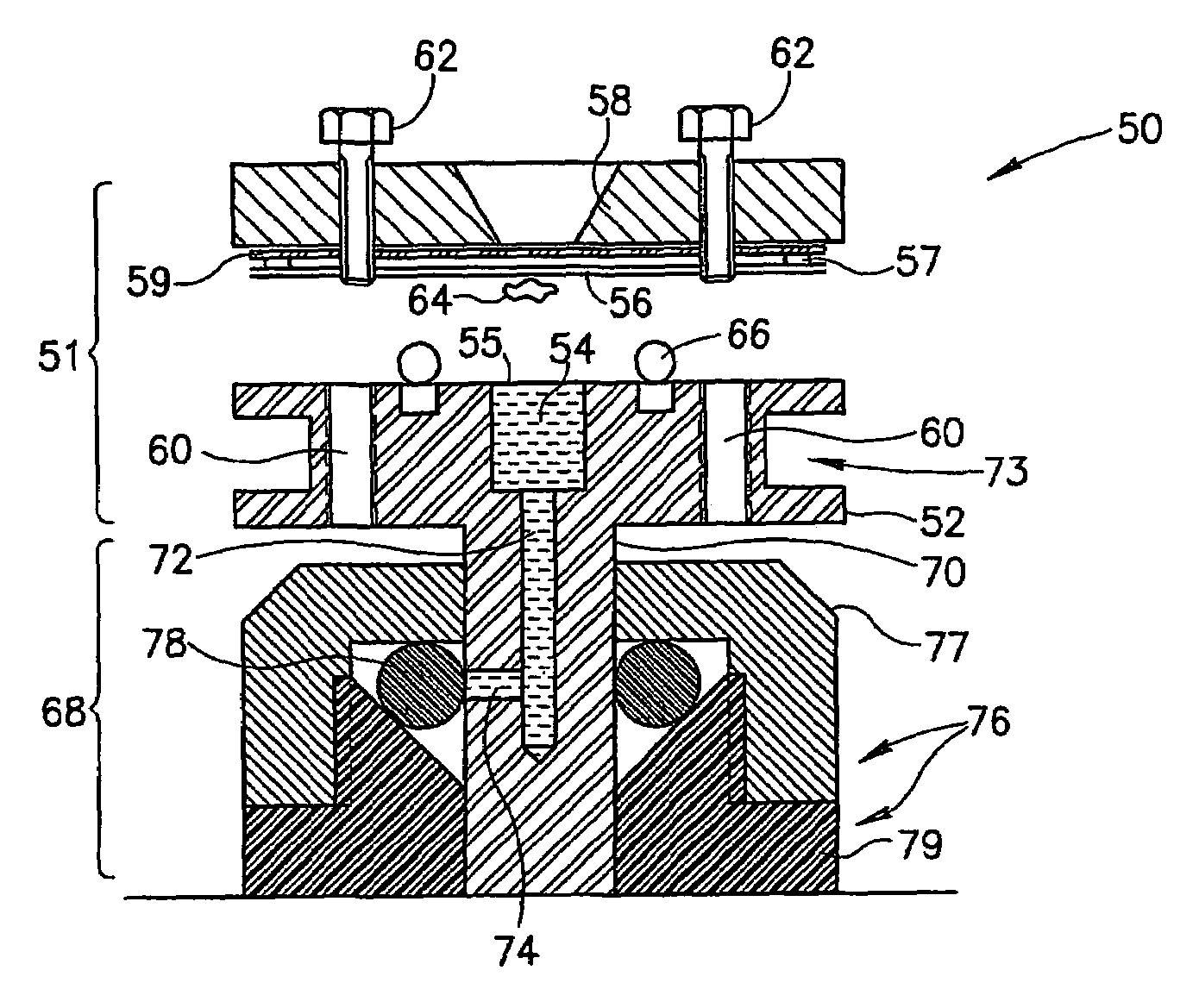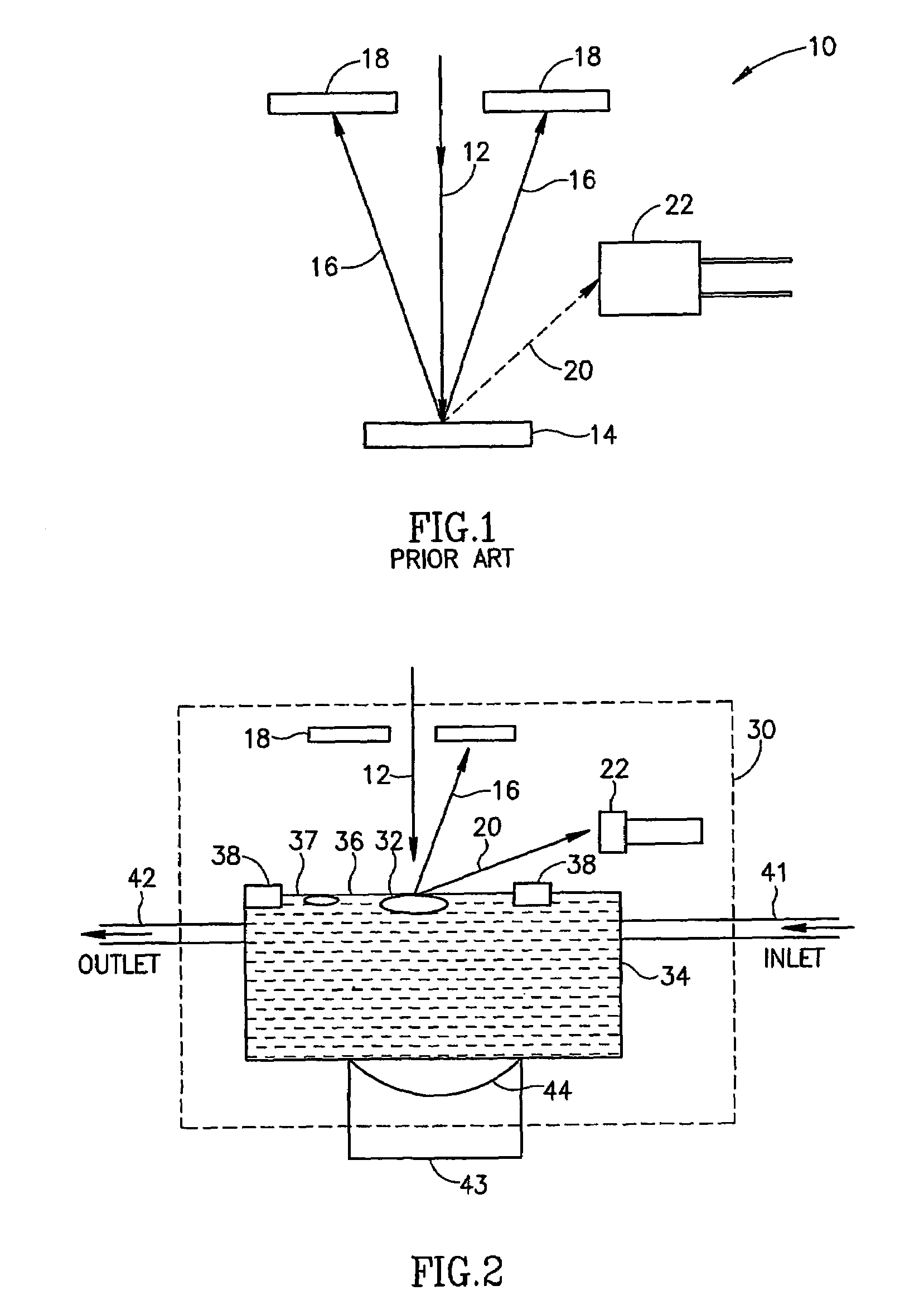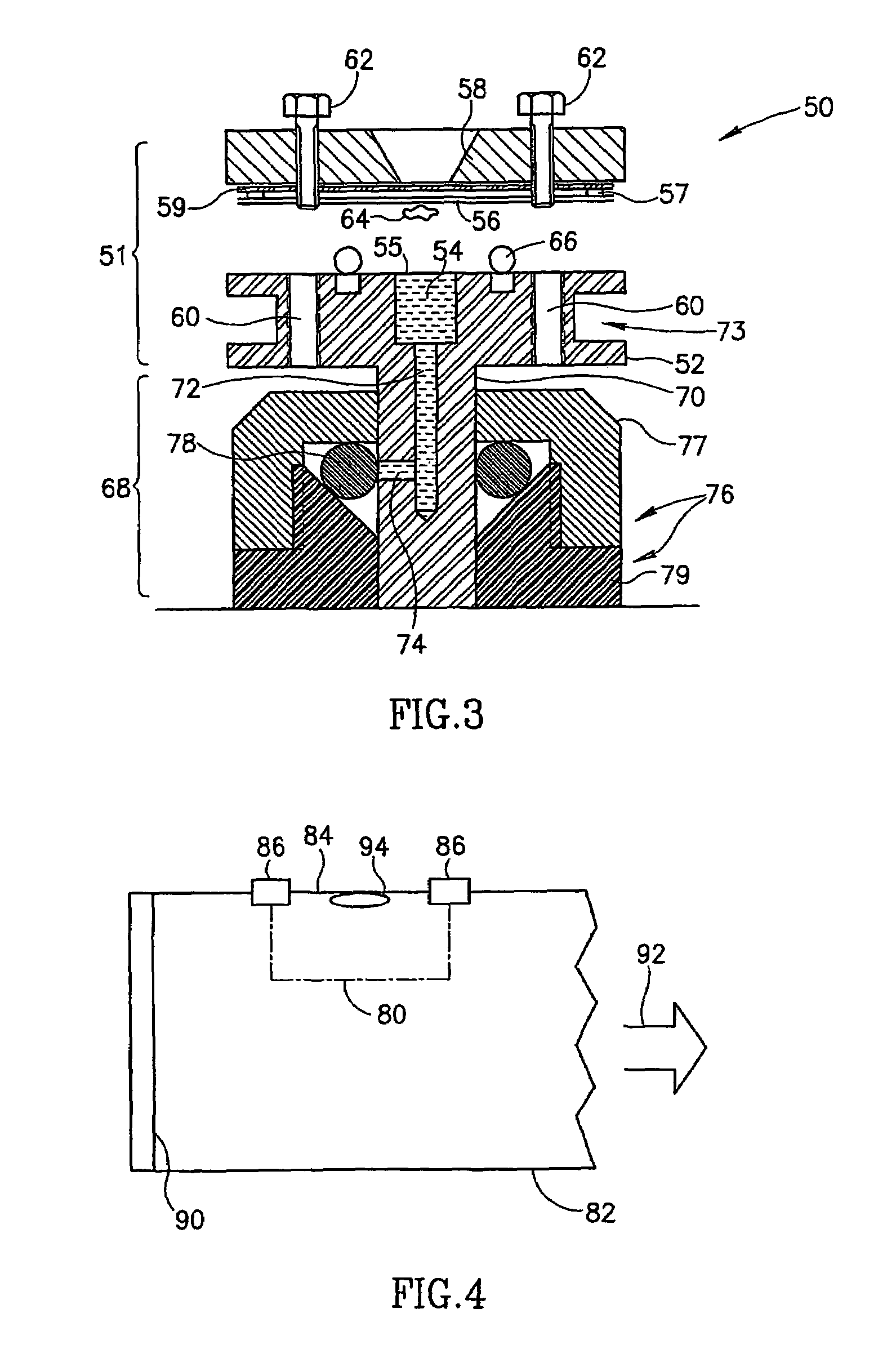Device and method for the examination of samples in a non-vacuum environment using a scanning electron microscope
a scanning electron microscope and environment technology, applied in the direction of instruments, heat measurement, machines/engines, etc., can solve the problems of vacuum preservation of samples, failure to successfully view wet objects, and failure to achieve the effect of high resolution
- Summary
- Abstract
- Description
- Claims
- Application Information
AI Technical Summary
Benefits of technology
Problems solved by technology
Method used
Image
Examples
examples
Growing Cells on the Partition Membrane
[0222]The following are exemplary procedures for growing cells on the membrane given as nonlimiting examples. The polyimide partition membranes are first coated with fibronectin (0.1 mg / ml) for 15 minutes. After washing with PBS and culture medium cells are plated in the usual ways at concentrations of 800–1500 cells in 12–15 μl per chamber. After 24 hours cells are ready for manipulation / labeling. Most cell types can grow on the partition membrane itself without the support of an additional matrix like fibronectin, but under such conditions they would be more likely to be washed off during the extensive washing procedures. The viability of the cells is not affected by any of these procedures.
[0223]The current invention is compatible with both adherent and non-adherent cells (as exemplified hereinbelow). For the purpose of imaging non-adherent cells (lymphocytes for example), cells are first labeled in suspension, and then allowed to adhere for...
PUM
| Property | Measurement | Unit |
|---|---|---|
| pressure | aaaaa | aaaaa |
| pressures | aaaaa | aaaaa |
| thicknesses | aaaaa | aaaaa |
Abstract
Description
Claims
Application Information
 Login to View More
Login to View More - R&D
- Intellectual Property
- Life Sciences
- Materials
- Tech Scout
- Unparalleled Data Quality
- Higher Quality Content
- 60% Fewer Hallucinations
Browse by: Latest US Patents, China's latest patents, Technical Efficacy Thesaurus, Application Domain, Technology Topic, Popular Technical Reports.
© 2025 PatSnap. All rights reserved.Legal|Privacy policy|Modern Slavery Act Transparency Statement|Sitemap|About US| Contact US: help@patsnap.com



